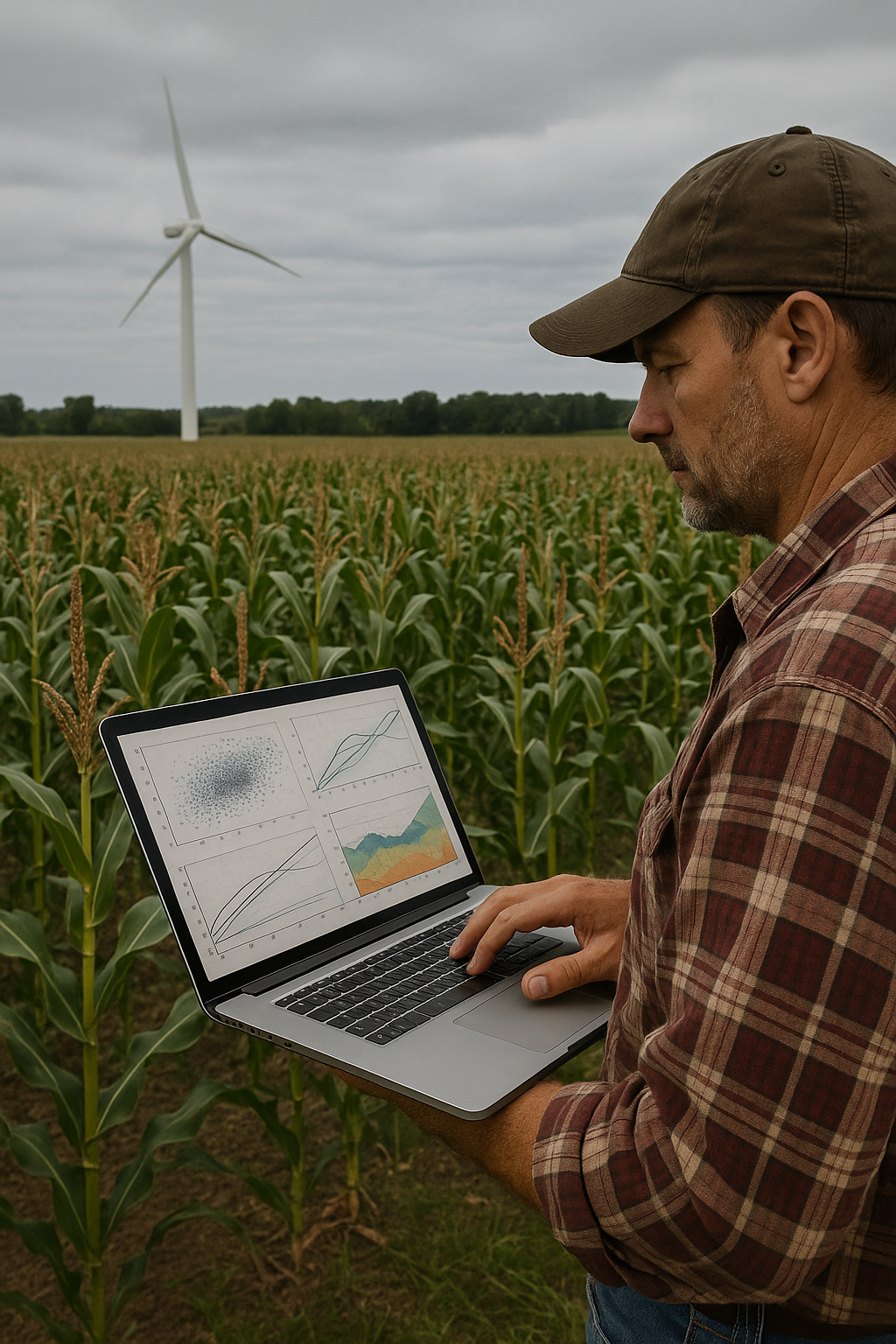Climate-smart farming gets boost from AI ensemble models
Ensemble models, comprising multiple algorithms or simulations to improve prediction accuracy, are increasingly being applied to analyze complex, climate-related phenomena in agriculture. The review highlights that their use began around 2011, initially focused on modeling invasive species, and has since expanded rapidly to encompass core issues such as temperature variability, precipitation shifts, and land cover changes.

Extreme weather and shifting climate patterns are placing global food systems under growing pressure, prompting researchers to adopt advanced machine learning techniques to forecast crop yields, soil health, and land use changes with greater accuracy. A new review paper sheds light on how ensemble models are emerging as powerful tools for assessing climate change impacts on agriculture.
Published in AgriEngineering and titled “Research on Using Ensemble Models to Assess the Impacts of Climate Change on Agriculture Production: A Review,” the study compiles findings from a wide range of peer-reviewed literature to map how machine learning and statistical model combinations are improving predictions in yield, land use, soil carbon dynamics, and food security planning.
How are ensemble models being used in agricultural climate research?
Ensemble models, comprising multiple algorithms or simulations to improve prediction accuracy, are increasingly being applied to analyze complex, climate-related phenomena in agriculture. The review highlights that their use began around 2011, initially focused on modeling invasive species, and has since expanded rapidly to encompass core issues such as temperature variability, precipitation shifts, and land cover changes.
These models have proven effective in managing the uncertainties associated with climate forecasts by aggregating outputs from different approaches. This includes combining machine learning techniques such as Random Forest, Boosted Regression Trees, and neural networks, along with traditional statistical models. The aggregated outcomes offer more robust insights than single-model forecasts, especially in scenarios where climate dynamics interact with ecological and agronomic variables.
Over the years, ensemble modeling has been applied to a diverse set of research themes. Notably, land use classification has emerged as a key focus area, underlining the role of these models in monitoring human-induced landscape changes under shifting climatic regimes. Additionally, the review reports a growing interest in applying ensemble techniques to assess carbon storage in soils - a key factor in climate mitigation strategies.
What are the most common models, crops and regions studied?
The review identifies a clear trend in model selection, with Random Forest (RF) and its variants standing out as the most frequently employed ensemble methods. RF's ability to handle high-dimensional data and its strong performance in variable importance ranking have made it a popular choice among agricultural and climate scientists.
In terms of crop focus, ensemble modeling research has predominantly centered on staple grains such as wheat, maize, and rice. These crops are not only major sources of global caloric intake but are also highly sensitive to changing climate patterns. The researchers note that ensemble models have been pivotal in simulating yield variations under different climate change scenarios, helping policymakers and agricultural planners design more resilient food systems.
Geographically, the bulk of studies reviewed were concentrated in North America, Europe, and Asia. However, the authors observe a growing number of research efforts emerging from Latin America and parts of Africa. Despite this progress, the review calls attention to continued gaps in data availability and model customization for underrepresented regions, which are often the most vulnerable to climate shocks.
In several studies, ensemble models were used to examine the influence of various climate variables, such as heatwaves, irregular rainfall, and drought frequency, on productivity and soil degradation. These analyses have not only advanced scientific understanding but also informed decision-support tools for land-use planning and crop insurance schemes.
What are the challenges and future directions for ensemble modeling in agriculture?
While ensemble models have become indispensable in climate-agriculture research, the review also emphasizes several challenges that must be addressed to unlock their full potential. Chief among these is the need for standardized evaluation frameworks and benchmark datasets. The current diversity in model inputs, calibration methods, and validation techniques limits comparability across studies and slows scientific consensus.
Another critical concern is the complexity and lack of interpretability of some ensemble methods. While accuracy is a strength, the 'black box' nature of certain machine learning ensembles can make it difficult for stakeholders, particularly non-specialists like farmers and local planners, to understand or trust the results. This underscores the importance of developing explainable AI systems and visualization tools that translate model outputs into actionable insights.
Additionally, data limitations, especially in low-resource regions, remain a major constraint. High-resolution meteorological and agricultural datasets are essential for training effective models, but such data are often sparse or unavailable in areas facing the brunt of climate change. The authors stress the need for global collaborations, open data initiatives, and investment in digital infrastructure to bridge this gap.
For future research, the researchers envision new opportunities for integrating ensemble models with remote sensing, Internet of Things (IoT) devices, and big data analytics. Such integration would enhance both the spatial and temporal precision of climate impact assessments. The potential of combining model ensembles with real-time monitoring systems could lead to dynamic forecasting platforms capable of informing immediate agricultural decisions.
The study also points to promising avenues in predictive soil health modeling, water resource optimization, and localized climate resilience planning. These developments would not only improve risk management strategies in agriculture but also support broader sustainability goals related to biodiversity conservation and carbon neutrality.
- READ MORE ON:
- Ensemble models in agriculture
- Machine learning in climate modeling
- Climate-smart agriculture
- Sustainable agriculture technologies
- Climate resilience in agriculture
- Food security and climate change
- Agricultural decision-support systems
- AI-based agricultural planning
- How ensemble modeling improves crop yield forecasting under climate uncertainty
- FIRST PUBLISHED IN:
- Devdiscourse










